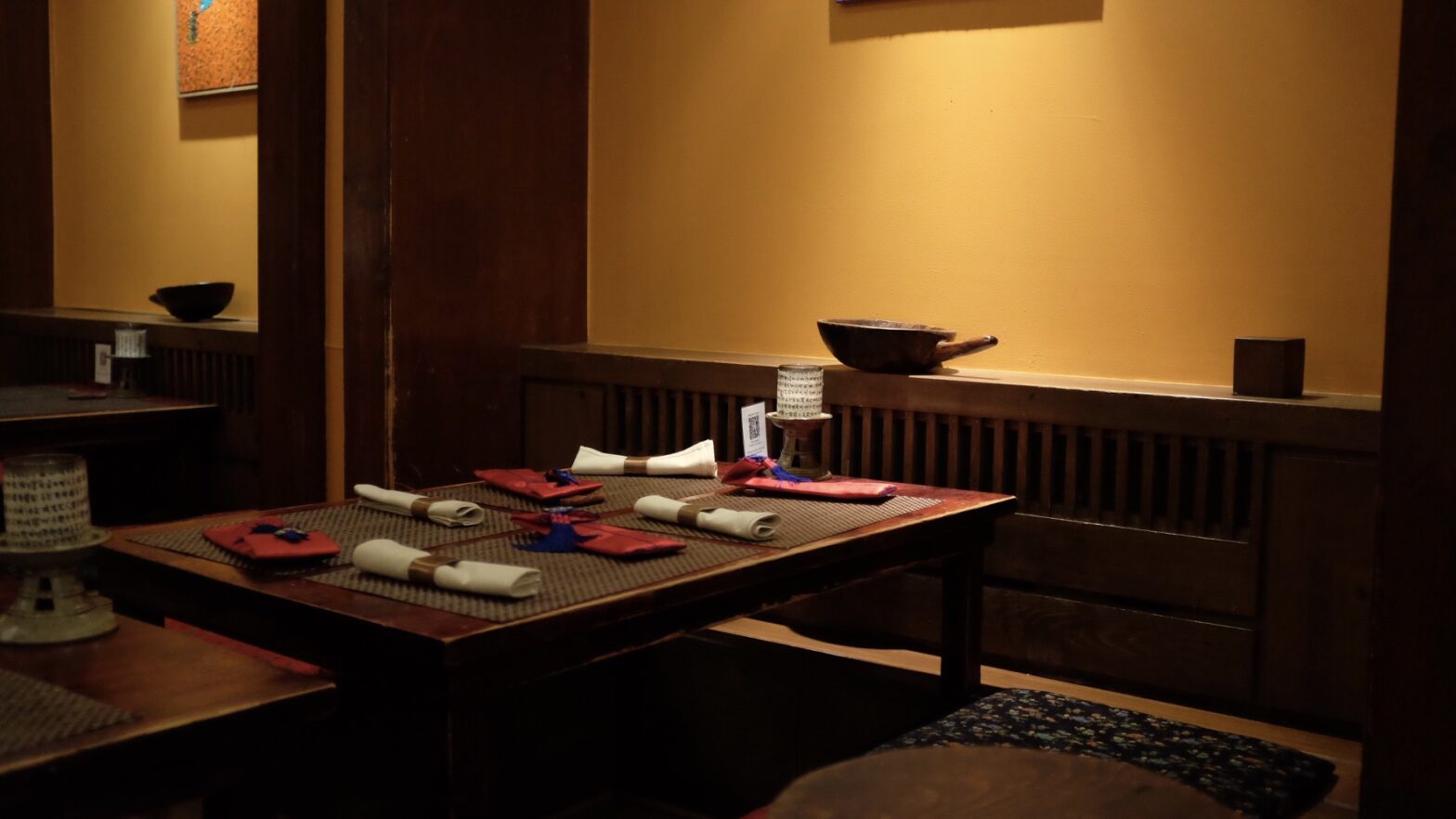Some restaurants are so flawless that it feels like they should be a secret, as though an experience so expertly curated should be kept safe and close and away from hungry eyes. Yet right in the heart of Koreatown, nestled unsuspectingly between much gaudier establishments, is an oasis by the name of Hangawi.
Reflecting its all-vegetarian menu, the entrance is humble and organic, lined with wood and warmly lit. Aimed at providing an immersive and traditional experience, guests remove their shoes in the foyer, which are placed in small wooden cubicles according to table number by attentive staff. Immediately the atmosphere is serene and crackling with gentle conversation. It feels like a far cry from the raucous streets and honking taxis just outside the door.
Guests are shown to their tables, cautioned to be careful as they get seated, as the tables are set into the floor. Waiters kneel to meet guests at eye level as they take drink orders, and as entrees are ordered, waitstaff remove wooden utensils from the embroidered silk pouch at each customer’s setting.
The waitstaff’s manner is mild and comforting and could make any first time diner feel like they’re returning to a favorite spot. Decoration is minimal but tasteful, with small candle-lit lamps on each table and simple oil paintings of small fish on the walls.
Drinks arrive quickly, though maybe slightly smaller than expected, and appetizers are only minutes behind. A lychee mojito made with lychee juice and soju — a colorless Korean spirit made from mostly rice — is exquisitely tart and not too sweet. It surely won’t last long.
As if riding in on a palanquin, rice flour kale pancakes arrive from above on a great slab of stone, their crispy little bodies resting on banana leaf sheets. Delicately pan fried and cut into quarters, they have a delightful slight chew from the mochi (sweet rice) flour and are quickly ushered into their accompanying sauce, something sour, sweet, and sinfully tasty.
After a second lychee mojito, the stone slab is replaced with a rectangular white dish. On the dish lay small patties of savory tofu wrapped in steamed sesame leaves and garnished with “spicy” sauce mild enough for even a true spice-o-phobe. The heat is kept in check, but the flavor is boundless.
Barely seconds after the last patty is carried away by a poorly operated pair of chopsticks, the plate is retrieved by an eagle-eyed waitress, who asks already nodding heads whether they would like another drink.
A light flow of traffic through the entryway remains through dinner service: happy faces and full bellies cycling in and out, keeping the contented hum consistent. Suddenly there is a sizzling overhead, as entrees of DolSot Bibimbap arrive: two hot stone bowls, popping like rice krispies in their searing little cauldrons.
A waitress asks for spice preferences and mixes in portions of a smooth, red chili paste accordingly. She sets down the bowls, each in their own wooden stand, placing two containers of kimchi down between them; one is spicy and the other mild.
The stone bowls are filled with rice, an assortment of vegetables, and an addition of steamed tofu — adding a slice of the chilled, acidic kimchi makes for a divine bite. A hearty portion is offered; only about half is finished while the rest is swiftly packed up to take home, destined to be the most delicious leftover lunch of all leftover lunches.
Two positively stuffed diners spare their pocketbooks and stomachs the pressure of looking at a dessert menu, more than satisfied by the meal and unparalleled cocktails. A meal at Hangawi is an experience as much as a chance to refuel — a curated escape from the chaos and disarray of Manhattan. An onsight wizard conjures up the correct shoes before jackets are even fastened, and stepping back out into the city circus feels like waking up from a sweet dream.








Leave a Reply